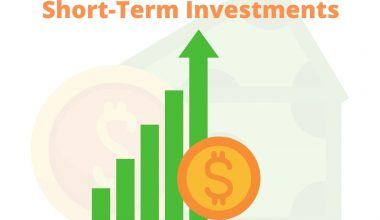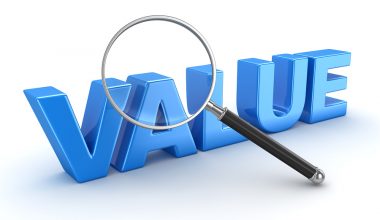As an investor, there is a need for you to know the price of a bond, the coupon payments, and the maturity value. Consequently, all coupon payments are made on time and are then reinvested at the same interest rate. However, there is a need to calculate the discount rate. This discount rate is the yield to maturity. Yield to maturity represents the expected annual rate of return earned on a bond under the assumption that the debt security is maintained till maturity. This article illustrates more on yield to maturity formula, calculator, and also how to calculate yield to maturity.
Yield to Maturity Formula and Calculator
The below formula focuses on how to calculate the inaccurate yield to maturity with its calculator. Whereas calculating the exact YTM will require testing. However, there are mistakes regarding various rates in the current value of the bond. This is until the price matches the actual market price of the bond. Lately, there are computer applications that facilitate easy calculation.
Yield to Maturity Formula = [C + (F-P)/n] / [(F+P)/2]
Where,
- C is the Coupon.
- F is the Face Value of the bond.
- P is the current market price.
- n will be the years to maturity.
The formula below estimates the bond’s existing value. If you have the bond’s present value, you can calculate the yield to maturity in reverse using iterations.
Step by Step Yield To Maturity Calculator
The measures to calculate yield to maturity are as follows:
- Assembled the data on the bond, like its face value, months remaining to mature, the present market price of the bond, and the coupon rate of the bond.
- Now calculate the annual income obtainable on the bond, which is mostly the coupon, and it could be paid annually, semi-annually, quarterly, monthly, etc. and accordingly, the calculation should be made.
- Also, you need to alienate the discount, which is different from the face value of the bond and the current market price over the life of the bond.
- The numerator of the YTM formula will be the sum of the amount calculated in steps 2 and step 3.
- The denominator of the YTM formula will be the average price and face value.
- When one divides step 4 by step 5 value, it shall be the approximate yield on maturity.
Applicability and Uses of Yield to Maturity Calculator
- Yield to maturity allows an investor to compare the present value of the bond with other investment options in the market.
- You should consider the time value of money while calculating YTM, which helps in better analysis of the investment with regard to a future return.
- It promotes making credible decisions as to whether investing in the bond will fetch good returns as compared to the value of the investment at the current state
Calculations in the Yield to Maturity
The yield to maturity calculator and formula also consists of the following factors:
#1. Coupon Rate(C)
The coupon rate is often referred to as the bond’s interest rate. However, the rate is the periodic payments made regularly from the bond issuer to the investors. In general, the higher the coupon rate attached to the bond, the higher the yield.
#2. Face Value (FV)
The face value of a bond (i.e. the par value) is the amount to be repaid to a bondholder on the date of maturity.
#3. Present Value (PV)
The present value (PV) of the bond refers to the current market price and how much investors are willing to pay for the bond in the open market as of the present date, which may be higher (or lower) than the bond’s FV based on the market conditions and supply/demand.
#4. Maturity Date
The pre-specified date on which the issuer is contractually bound to repay the principal is from this date, the number of years to maturity can be derived.
#5. A Number of Compounding Periods (n)
The number of compounding periods refers to the number of payments made in one year multiplied by the number of years to maturity (e.g. five years until maturity and semi-annual coupon payments would mean n = 10 periods).
A Clear Understanding of Yield To Maturity (YTM)
Yield to maturity is the inner rate of return (IRR) of a bond. However, the asset must be on hold until maturity, and all the returns must be reinvested at a constant rate. YTM is similar to the current yield where it determines the return. However, one can expect this by holding the security for a year. Therefore, YTM is slightly developing and accounting for the time value of money.
Furthermore, it is the total due return for an investor if the bond is on hold till maturity. YTM factors all the present values of future cash flows from an investment which equals the current market price. However, this is based on the presumption that all the proceeds are re-invest at a steady rate. Hence, making the investment held until maturity. An investor knows the price of the bond, the coupon payments, and the maturity value. However, there is a need to calculate the discount rate. This discount rate is the yield to maturity. Often time it uses a trial and error basis to calculate. The yield to maturity calculator can be calculated only through trial and error methods.
However, one can easily calculate yield to maturity by knowing the relationship between bond price and its yield. When the bond price is at par, the coupon rate is equal to the bond’s interest rate. If the bond is selling at a premium, then the coupon rate is higher than the interest rate. And if the bond is selling at discount, the coupon rate is lower than the interest rate. This information will help an investor to calculate yield to maturity smoothly.
Why Dose Yield To Maturity Keeps Changing?
It keeps changing because each bond has a par value, and it can either trade at par, a premium, or a discount. The amount of interest paid on a bond is fixed. However, its current yield of the annual interest relative to the current market price fluctuates as the bond’s price changes. It fluctuates with changing market conditions. Therefore, in practice, the YTM of an open-ended debt fund is different from the scheme’s actual returns.
Furthermore, since debt funds invest in multiple funds, a change in the YTM of a single bond will have an impact on the YTM of the debt fund. However, the magnitude of this change will be proportionate to the weightage of the bond in the debt mutual fund portfolio.
Taking the above example, let us understand how the changing market conditions impact the bond’s YTM. Let’s assume that the bond’s rating reduces due to its poor performance after one year. As a result, the market value of the bond is now INR 700.
Importance of Yield to Maturity
- The YTM metric facilitates comparisons among different bonds and their expected returns, which helps investors make more informed decisions on how to manage their bond portfolios. Even for bonds consisting of different maturities and coupon rates.
- The YTM enables comparisons that represent an annualized rate regardless of the bond’s years to maturity.
- By understanding the yield to maturity formula, investors can better predict how changing market conditions could impact their portfolio holdings based on their portfolio strategy and existing investments.
- Considering yields rise when prices drop (and vice versa), investors can project the yield-to-maturity (YTM) on portfolio investments to guide better decision-making.
- The YTM can also enable debt investors to assess their degree of exposure to interest rate risk, which explains the potential downside that causes sudden changes in interest rates.
- The relationship between the current YTM and interest rate risk is inversely proportional, which means the higher the YTM, the less sensitive the bond prices are to interest rate changes.
Advantages and Disadvantages of Yield to Maturity
There are reasons which can draw investors to commit their money to high yield maturity. Below are the advantages and disadvantages of yield to maturity.
Advantages
Here are a few advantages of yield to maturity:
- Yield to maturity calculates the total return that an investor will earn during the entire life of the bond.
- It not only considers income gains but also takes into review capital gains which present a complete earing picture.
- It does not include any forecast in its calculation and therefore gives more accurate information.
Disadvantages
Let’s also look at the disadvantages of yield to maturity:
- It assumes that the bond/investment will be on hold until maturity, which is impractical since there is a wide variety of bonds that allow an investor to square up his/ her investment before maturity also, and an expert investor may exercise that option.
- Another major limitation of yield to maturity is the rate of investment. Yield to maturity assumes that you reinvest all earnings of investment at the same rate. There are multiple investment options in today’s investment market, and a wise investor will never invest at the same rate if a better option is available.
In addition to the above advantages and disadvantages of yield to maturity, It assumes that the bond/investment will be on hold until maturity, which is impractical since there is a wide variety of bonds that allow an investor to square up his/ her investment before maturity also and an expert investor may exercise that option.
Another major limitation of yield to maturity is the rate of investment.
There are multiple investment options in today’s investment market, and a wise investor will never invest at the same rate if a better option is available.
What is YTM and coupon rate?
The yield-to-maturity is the predicted total rate of return on a bond, assuming that it is kept to maturity, whereas the coupon rate indicates the actual amount of interest that the bondholder actually receives each year.
Is it better to have a higher or lower yield to maturity?
The low-yield bond is preferable for investors seeking a nearly risk-free investment or for those who are hedging a mixed portfolio by holding some of it in low-risk securities. The high-yield bond is preferable for investors who are prepared to assume some risk in exchange for a greater return.
Why is yield to maturity important?
The main benefit of yield to maturity is that it allows investors to compare various securities and the returns they might anticipate from each. It is important for picking the securities to include in their portfolios.
What is the difference between YTM and interest rate?
The yield in bonds is referred to as the yield-to-maturity (YTM). The total return that a bond’s holder can anticipate receiving when the bond matures is known as the yield-to-maturity. The interest rate that the bond issuer agrees to pay determines the yield.
What is the difference between YTM and IRR?
IRR and yield to maturity are most different because the latter refers to investments that have already been made. Yield to maturity, or YTM, is a term used to determine an investment’s yield based on its current market price (often a bond or other fixed income security).
What factors affect yield to maturity?
These things are taken into account. Coupon rate—The higher the coupon rate, or the amount of interest paid on a bond or CD, the higher the yield. That’s because the bond or CD will pay interest on a larger portion of its face value each year. Price—A bond’s or CD’s yield decreases with increasing bond or CD price.
Does higher YTM mean higher return?
Due to the fact that these payment amounts are fixed, you would prefer to purchase the bond for less money in order to enhance your earnings, which results in a greater YTM. The bond’s YTM will be lower if you purchase it for a greater price, on the other hand.
Yield to Maturity FAQs
Is yield to maturity annualized?
Yes, the yield to maturity (YTM) of a bond is the annualized return that a bond investor would receive from holding the bond until maturity.
Should yield to maturity be higher or lower?
As these payment amounts are fixed, you would want to buy the bond at a lower price to increase your earnings, which means a higher YTM. On the other hand, if you buy the bond at a higher price, you will earn less a lower YTM.
Why is yield to maturity important?
It is important because is the fact that enables investors to draw comparisons between different securities and the returns they can expect from each. It is critical for determining which securities to add to their portfolios.
{
“@context”: “https://schema.org”,
“@type”: “FAQPage”,
“mainEntity”: [
{
“@type”: “Question”,
“name”: “Is yield to maturity annualized?”,
“acceptedAnswer”: {
“@type”: “Answer”,
“text”: “
Yes, the yield to maturity (YTM) of a bond is the annualized return that a bond investor would receive from holding the bond until maturity.
“
}
}
, {
“@type”: “Question”,
“name”: “Should yield to maturity be higher or lower?”,
“acceptedAnswer”: {
“@type”: “Answer”,
“text”: “
As these payment amounts are fixed, you would want to buy the bond at a lower price to increase your earnings, which means a higher YTM. On the other hand, if you buy the bond at a higher price, you will earn less a lower YTM.
“
}
}
, {
“@type”: “Question”,
“name”: “Why is yield to maturity important?”,
“acceptedAnswer”: {
“@type”: “Answer”,
“text”: “
It is important because is the fact that enables investors to draw comparisons between different securities and the returns they can expect from each. It is critical for determining which securities to add to their portfolios.
“
}
}
]
}
Related Articles
- EFFECTIVE ANNUAL YIELD: Definition, How to Find EAY Formula & Calculator
- Stock Market Calculator: See how your Market can grow
- The Product Life Cycle Theory: Guide to the Stages & Examples
- Present Value Formula: Definitions, Examples, Formula & Calculations
- Product Life Cycle Stages Explained With Real-world Examples
- Yield: Definition, How to Calculate with Examples, & Types
(Sematext)






